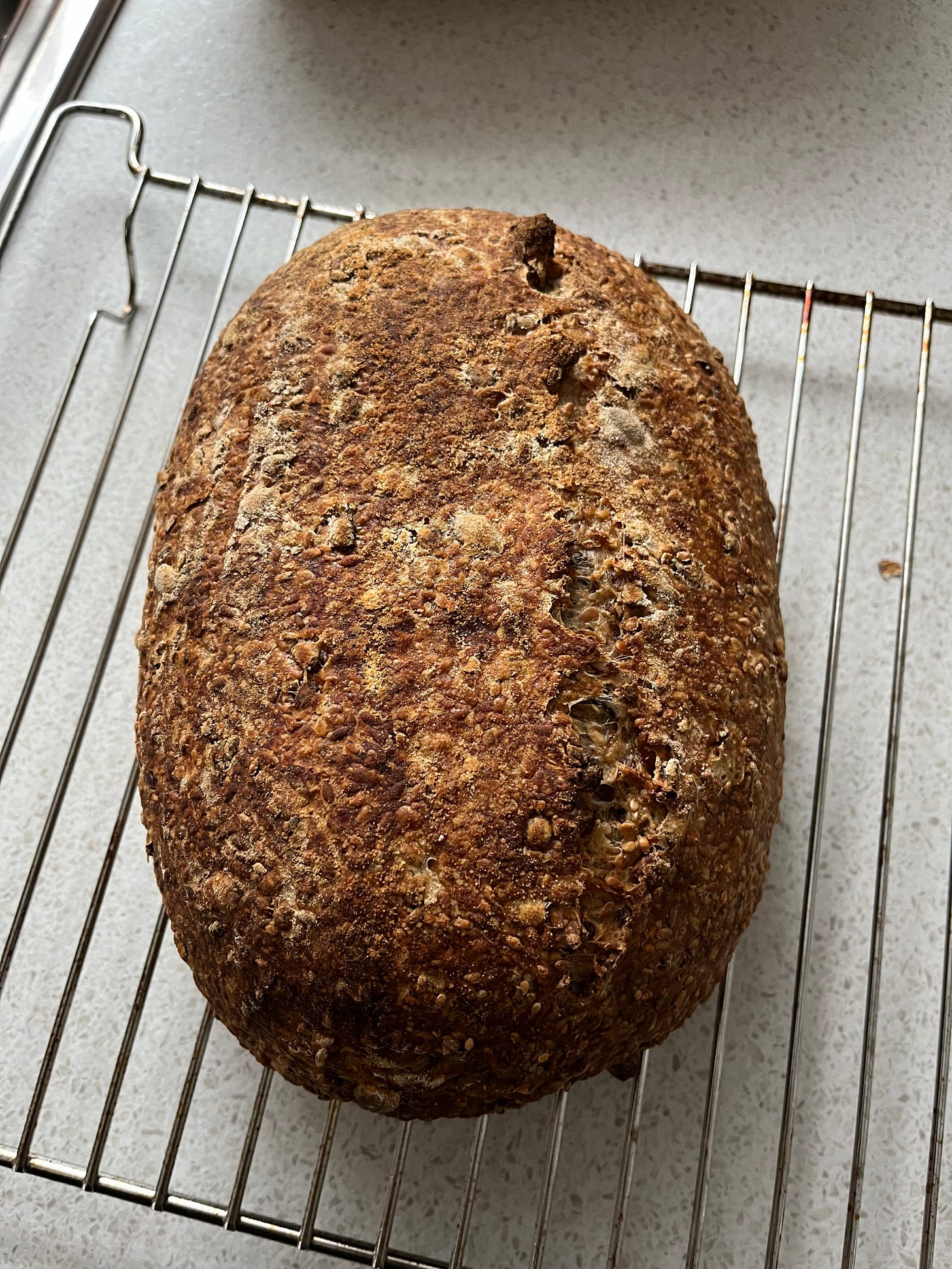Long distance levains, fold 3
If you follow me on Instagram, you can’t have missed that I’m making a lot more bread than ever before. That’s because my friend Dani and I have been embarking on a baking project since the start of the year. We call it “long distance levains” — I’m in the U.K., Dani’s in Canada — and we’re baking a new sourdough recipe together each week. In the post below, we reflect on the experience 9 months in.
from Dani in Smithers, British Columbia
Ah, the changing of the seasons. The leaves turn yellow, the air gets crisp…. and my bread becomes a lazy goodfornothing inert mass at the bottom of a bowl.
And to think I was annoyed at it in the height of summer, where my levain was chomping at the bit after 4 hours, foaming away with impatience if I left it for more than 6 overnight. This being my (roughly) third winter of sourdough (and my thirty-second trip around the sun), you would think I could anticipate, nay, prepare for such an event? Sadly no.
Maybe this means I have reached the point of laissez-faire? Which, despite the above lament, would be a very good thing. I can be a fretter, worrier, lay-awake-stare-at-the-ceiling-er for pretty much anything, agonizing while everyone else glides past. Not that I have ever laid awake contemplating bread failures (I think…?), but I have woke up at 4 am entirely unnecessarily because a recipe said 12 hours fridge rise and I took it as iron clad truth. I have re-made breads that were mostly ok simply because I didn’t feel they were suitable for public consumption at potlucks. I have apologized for the shape of my bread. And why?
But here are some recent triumphs:
I brought a small and poorly risen bread (see temperature difficulties above) to a dinner and when people complimented me I mostly shut up about its flaws and let them believe that was how it was supposed to be
I let people try this bread before I ever tasted it myself (!)
When my sprouted rye went bad, I was only in denial and lament for 2 days before I threw it out and started again
When I don’t like a method specified in the recipe, I have been more frequently substituting with my preferred ways. Or I don’t read the methods at all, just the ingredient list and go from there.
So if the side effect is that I am needing to re-learn the basics, so be it. Sometimes it seems I learn better from screw ups than successes. In any case, here’s to more relaxed baking in the future!
from Sarah in London, England
Without looking back at our breadsheet, I feel this past quarter of long distance levains has mostly been about working through bread flops. I’ve got a loaf in mind – it feels light, smells faintly sour, and produces a slice broad enough to house a wheel of brie – and in my mind is where it mostly stays. I guess this is partly a consequence of our trying new recipes all the time: with each loaf we make we get some ideas of what’s going well – or not – and then it’s on to the next recipe with a new set of variables. OK, it may also have a little to do with my unrealistic expectations.
Back to other more likely suspects…we’ve generally been working with a higher percentage (up to 100%!) of wholemeal/wholewheat flours this time around. That doesn’t necessarily mean heavy, dense loaves – as some of the bread we made proves. It does serve as a good reminder of what my friend Joana pointed out to me a while back: it’s even more important to get to know your flour when it’s got more of the whole grain in it. If, like me, you’re buying a kilo of flour at a time – sometimes a fancy locally grown and milled one, sometimes the one Tesco Express has – you never get to know your flours for very long. Maybe I’ll remedy that with buying in bigger quantities, or at least sticking to flour from the same source as often as I can. I also have something to learn from Dani who, in addition to buying flours in fairly large quantities and milling other grains herself, often goes ‘off recipe’ based on what she thinks the flour or other circumstances call for. I try to use my instincts, too, but sometimes I lose my nerve and ignore now-obvious signs that the starter wasn’t right or that the dough needed more water, some more stretching and folding, some warmth, etc.
All this being said, one of my favourite slices in recent months came from a doorstop loaf I made in a new-to-me oven in a guest house in North Berwick, Scotland. I brought my starter and some flour with me from London and I bought some more flour locally. I fed the starter three times before using it to make a toasted barley porridge loaf. The dough started out soupy and came out of the oven heavy and with a dull, pale crust. I waited a day to cut into the loaf and each slice I ate was beautiful; it had lots of good flavours from sesame, flax, sunflower, and pumpkin seeds, it was a little sour, and it was roomy enough for thick slices of butter, a sausage, and, if I’d tried, probably even a wheel of brie.
Up next in the fourth (and final?) fold of #longdistancelevains, Dani and I are going to make some recipes for each other to try based on loaves we’ve made and loved so far. If you’d like to bake along with us, check out our rough recipes on my Instagram and tag us with your resulting loaves!




